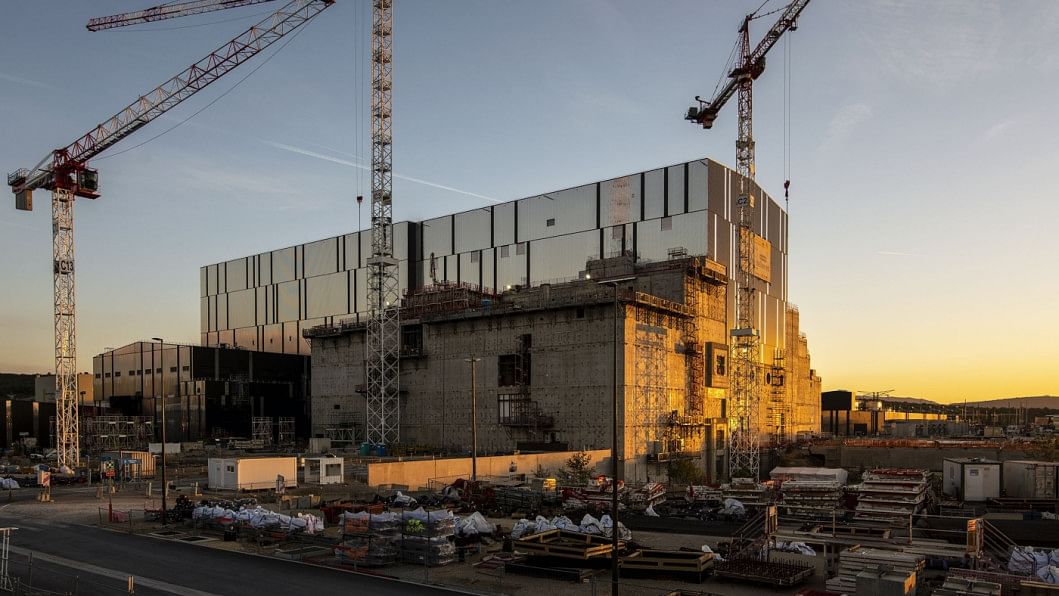Nuclear fusion: A big step towards clean, limitless energy

The declining reserves of fossil fuels and their detrimental effects on the environment have thrust nuclear power into the limelight. However, the 1986 Chernobyl and 2011 Fukushima accidents involving fission-based nuclear reactors that are in use now have heightened our doubts about nuclear technology's ability to provide a safe way of generating clean power.
Within the context of climate change, nuclear fusion is an attractive alternative because it does not produce greenhouse gases (GHG). Besides, unlike fission, fusion has a low burden of long-lasting dangerous radioactive waste. Fusion's by-product is helium, which is a non-toxic, non-radioactive gas used to inflate children's balloons.
So what is nuclear fusion? It is a process in which two lighter nuclei, typically isotopes of hydrogen such as deuterium and tritium, combine together under extreme conditions to form a heavier nucleus, releasing inexhaustible amounts of energy. A "fusion reactor" buried deep in the Sun's interior produces, in one heartbeat, the energy equivalent of 100 billion nuclear bombs.
Major challenges:
The quest to make fusion a viable power generation option has turned out to be extraordinarily difficult.
Yet, since the 1950s, scientists have been working tirelessly to develop a fusion reactor with the following goals in mind: 1) achieve the required temperature of more than 100 million degrees Celsius to ignite a self-sustaining fusion reaction, 2) contain and control the staggering levels of heat generated in the plasma, which is an ultra-hot soup of gases in which the electrons are completely detached from the atomic nucleus, 3) keep the plasma together at this temperature long enough to get useful amounts of energy out of the reaction, and 4) obtain more energy from the reaction than is used to heat the plasma to the ignition temperature.
The breakthroughs:
In August 2021, researchers at the National Ignition Facility (NIF) at the Lawrence Livermore National Lab in California were able to ignite a fusion reaction that lasted for a fraction of a second by pumping laser beams into a tiny chamber containing deuterium and tritium. A year later, researchers in South Korea were able to keep the reaction going for 30 seconds at temperatures beyond 100 million degrees Celsius.
The energy yield of both the experiments was modest and less than the energy needed to ignite the reaction.
Physicists have also devised two competing techniques to control the hot plasma and keep it away from the walls of the container. They are magnetic confinement and inertial confinement. The one that is preferred by fusion researchers is a magnetic confinement device called "tokamak." This workhorse of fusion is a doughnut-shaped chamber in which magnetic fields keep the plasma in perpetually looping paths without touching the walls.
The energy gain breakthrough:
On December 13, 2022, the US Department of Energy announced that scientists at the NIF had managed for the first time ever to achieve a "net energy gain" – producing more energy in a fusion reactor than was required to drive the process. In particular, it produced three million joules of energy, with about two million joules going into the reaction. (To put the unit of energy into perspective, the kinetic energy of a one tonne car moving at 100 mph is one million joules.) In the past, the energy input far exceeded the energy output from a fusion reaction.
So what does this mean for the possibility of creating effectively unlimited amounts of clean energy? Fusion researchers denote the ratio of output energy to input energy with the letter Q. Although in this experiment Q=1.5, fusion reactors will have to reach a threshold of Q=10 before energy generation can be considered practical for commercial use.
While the amount of energy released in the experiment at the NIF is barely enough to boil water for a few cups of coffee, in some ways, it is a scientific milestone in the sense that scientists and engineers, after "more than 60 years of research, development, engineering and experimentation," achieved a Q-value of greater than one.
Moreover, once vetted by outside experts, this landmark achievement will be a big step forward towards clean, limitless energy – at least four million times more energy than is produced by burning coal or oil, according to the UN's International Atomic Energy Agency. More importantly, it promises to stimulate interest in fusion-related research, and possibly leverage funds for building fusion reactors.
Future outlook:
Considered to be the holy grail of energy, nuclear fusion has the magic wand that will most certainly solve our lingering energy problem.
Having said that, significant challenges still remain. Researchers are now actively working on improving laser technology and reactor design at several laboratories in the US and around the world. But the high cost of research and very expensive hardware limit most of the work to multinational consortia.
The 35-nation International Thermonuclear Experimental Reactor (ITER) under construction in Cadarache, France is the world's largest tokamak fusion reactor. Since its inception in 2006, ITER has progressed in fits and starts. It is beset with technical delays, a labyrinthine decision-making process, and cost estimates that have soared from EUR 5 billion to around EUR 20 billion.
Regardless, ITER will move the world a step closer to creating energy that is inherently safe and clean, using controlled thermonuclear fusion.
Ultimately, though, the achievement of fusion energy production with Q greater than one does not necessarily mean a green energy revolution is imminent. It will probably be years, likely a decade or so, before fusion power bears fruit. And it is also not clear if fusion will ever be cheap enough to radically transform our power grid.
Dr Quamrul Haider is a professor of physics at Fordham University in New York, US. He is also one of the authors of the book Nuclear Fusion ‒ One Noble Goal and a Variety of Scientific and Technological Challenges.

 For all latest news, follow The Daily Star's Google News channel.
For all latest news, follow The Daily Star's Google News channel. 






Comments